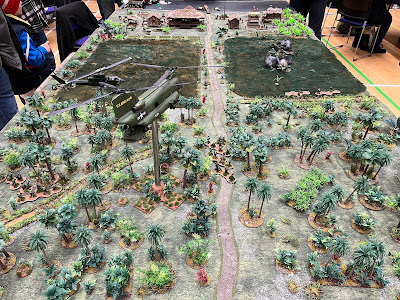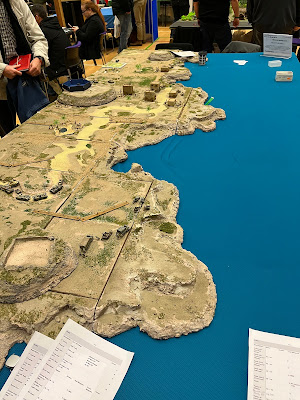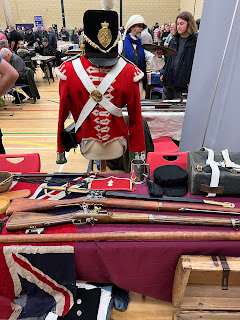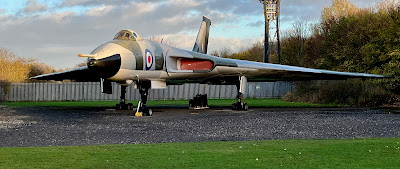This is Alexander Mikaberidze's new biography of the Russian commander. I have a copy of Roger Parkinson's somewhat outdated and apparently inaccurate, The Fox of the North. Kutuzov also appears in Mikaberidze's editing of official Russian histories, which I have found very useful in researching the Russo-Ottoman Wars. So, I was looking forward to this comprehensive treatment of Kutuzov, if not slightly daunted, when the massive volume arrived in the post! He is also a regular contributor to the entertaining Napoleonic Quarterly Podcast.

My main takeaway from this book is the sheer breadth of Kutuzov's career. He was a military thinker, a diplomat, an administrator, as well as an outstanding soldier. While the relationship has been embellished, he indeed served under and learned from the great Suvorov, who did much to modernise the Russian army of the day. His early campaigns were against the Ottomans, who, while far from their best, were not the 'sick man' they would become in the next century. This was the period of Russian expansion under Catherine the Great to the Black Sea and then into the Balkans. Here, Kutuzov learned the art of warfare, contributing to new Russian tactics, including independent divisional squares and Jager battalions. Kutuzov also gained a reputation as a brave commander, leading his troops from the front and sustaining wounds that could easily have been fatal. One penetrated his left cheek and exited his neck, miraculously missing any vital organs.
Most references to Kutuzov, and indeed the Russian army of the period, almost exclusively focus on the 1812 campaign. However, this account covers the Russo-Ottoman wars in detail, with clear maps and battles many will not have heard of. As a side note, this is also true of wargame companies, whose ranges almost exclusively focus on later campaigns. By the time Kutuzov played a crucial role in winning the Battle of Macin in 1791, he had been fighting the Turks for 20 years.
After that war in 1792, he was appointed as the Russian ambassador to Istanbul. This appointment required a whole range of new skills. Mind you, he wasn't short of help. His diplomatic train included 600 staff, including 49 musicians and 24 singers! On his return, he was appointed to command the prestigious Land Noble Cadet Corps, the premier military school. There he instituted significant reforms, which helped train a new generation of officers.
Kutuzov's career suffered and benefited from the patronage of the Tsars that ruled during his lifetime. He survived the purges under Tsar Paul, who sacked more than 330 generals. Interestingly, possibly due to recent TV series, we tend to think of Paul as the 'Mad Tsar'. Mikaberidze argues that it is somewhat unfair, and many of his reforms were far-reaching. He appears not to have been involved in the coup that murdered Paul and put his son, Alexander, on the throne. However, Alexander may not have been entirely convinced when he later dismissed him, although Mikaberidze argues it is more complicated than that. Kutuzov was the author of his own downfall as well.
When the Napoleonic Wars broke out, Kutuzov was recalled to the colours, proving that Alexander could be pragmatic enough to overcome his personal feelings. Kutuzov rescued the Russian army from its exposed position after the Austrian army was destroyed at Ulm. However, Alexander famously ignored his advice at Austerlitz, complaining that Kutuzov should have persisted because 'I was young and inexperienced.' This led to another sidelining of Kutuzov to Ukraine. However, by 1809 he was back on the Danube fighting the Ottomans as Prince Prozorovskii's second in command, effectively driving the campaign. Not that he was thanked for his efforts and was sent to Lithuania. Yet again, he was sent back in 1811 to tidy up the campaign as Napoleon gathered his forces on the Russian border. The Slobozia-Ruse operation during this campaign showed Kutuzov at his operational best, proving he was far from the defensive general his detractors claimed.
Despite his success against the Ottomans, Alexander sidelined him again at the start of the 1812 campaign, recalling him in time to adopt the well-known Fabian tactics and the Battle of Borodino. By abandoning Moscow, he almost got relieved again, but his strategy proved correct as Napoleon was forced to begin the long and terrible retreat. Kutuzov was at least partly to blame for Napoleon's escape over the Berezina River and was less enthusiastic about pursuing him into Germany. However, his active life finally caught up with him on 28 April 1813, when he died at his HQ in the town of Bunzlau (now Bolesławiec in western Poland). There is a fine memorial to him today, although he was buried in Kazan Cathedral.

As is often the case, Kutuzov's reputation was enhanced after his death. Tolstoy turned him into a hero in War and Peace. His reputation survived even into the Soviet period. This study paints a picture of a complex character, often flawed but with many remarkable achievements. His campaigns against the Ottomans were probably more successful than the better-known strategic victory in the 1812 campaign. It is hard not to admire the man after reading this book. It's not a quick read nor a dry academic work. Worth every minute, and I anticipate returning to it regularly. Highly recommended.
 |
| I have just finished the Kolyvan Musketeer Regiment in 28mm for my 1806 project. |




































